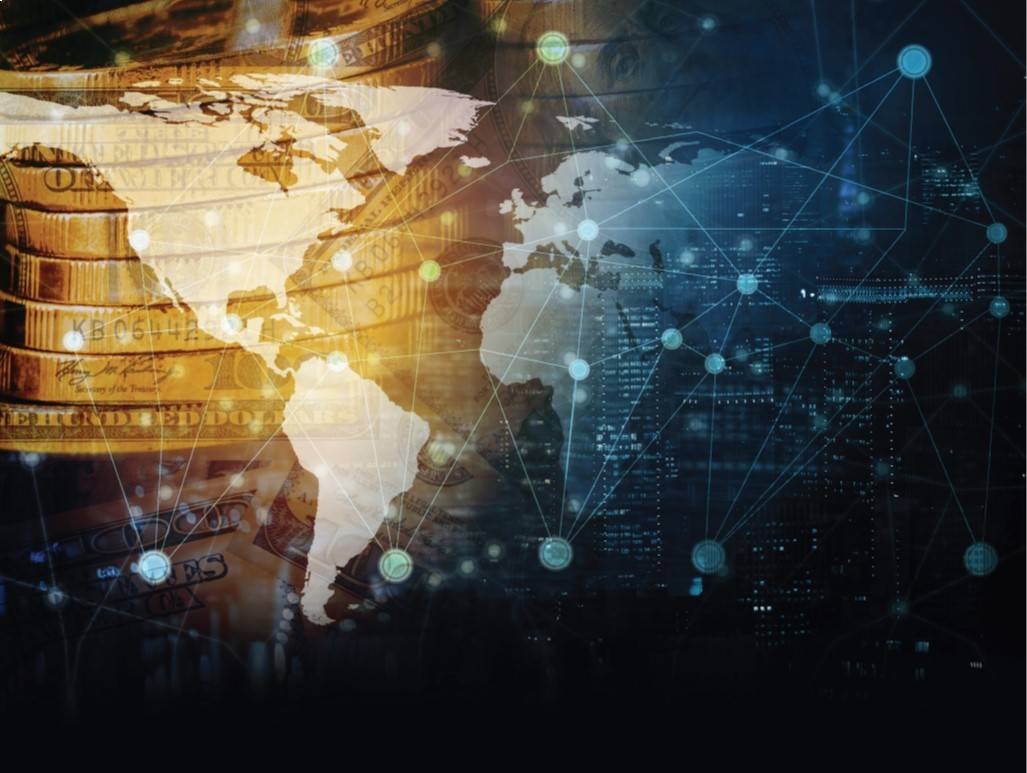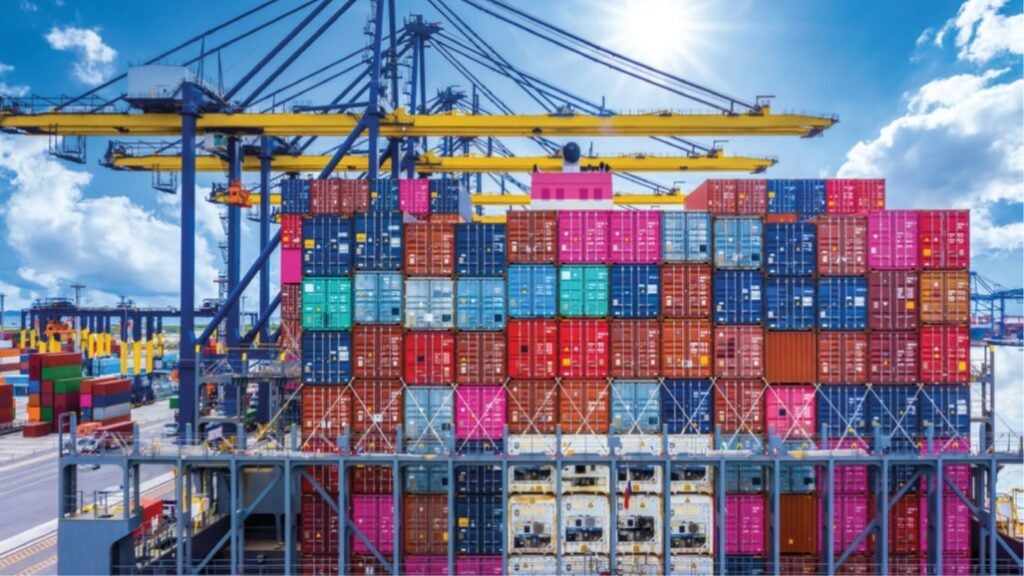
Since the onset of a pandemic that heavily impacted supply chains, global trade flows have faced a constant barrage of challenges – not least rising inflation and the looming prospect of recession in some of the world’s largest economies. Russia’s war in Ukraine, for its part, has the potential to suck in more countries, with the talk of nuclear conflict now at its loudest since the 1980s.
In a world that seems increasingly volatile and unstable, one might expect growing protectionism, with finance ministries eager to reduce risk and limit dependence on foreign powers. Overall, however, global trade flows have remained strong. In fact, as NYU Stern’s DHL Initiative on Globalisation reports, though the outlook remains uncertain, trade appears to be what Steve Altman describes as “self-resuscitating”.
“Trade has been resilient so far, and there are no signs in data on global flows to suggest otherwise,” explains Altman, the DHL Initiative’s director. “I focus on the actual trade, capital and people flows between countries and there is no evidence of a retreat from globalisation. Most flows are, in fact, at record levels.”
“Deglobalisation has happened in the past – as it did between the two world wars – so it is not impossible,” Altman continues. “There were many predictions that flows would become more regional but we don’t see that in the data. Yes, there has been some decoupling between the US and China, but it is still pretty limited and the flows are very large: greater than flows between any two countries in the world that don’t share a common border.”
The pandemic and Putin
The world may, therefore, not be breaking into discrete trading blocs just yet – but a cost of living crisis, a hot war in Europe and more potential disruptors over the horizon must surely impact long-term assessments of risk and the robustness in global supply chains. But will it be just a bump in the road – before unstoppable growth returns?
“We can’t know yet for sure what the long-term effects of the last few years will be,” argues Altman. “It is clear that there was an immediate negative effect on trade at the start of the pandemic, followed by a strong rebound. Trade collapsed faster than during the global financial crisis or the Great Depression, then the end of 2020 saw the fastest recovery on record.”
“So,” Altman adds, “there was not a sustained retreat from global trade, but temporary factors such as a shift from services to goods are now being unwound.”
Certainly, this fast-changing situation is reflected in the numbers. According to EY’s 2022 Europe Attractiveness Survey, 83% of companies were considering reshoring or nearshoring at the start of the pandemic – a figure that dropped to 23% in 2021, as executives realised the hefty cost of shifting supply chains back to Europe. Now, thanks to the war in Ukraine, businesses are once again considering reorganising their supply chains, with 53% of businesses considering nearshoring. Indeed, 43% are debating fully reshoring production to their domestic market – up from 20% in 2021.

Taking root
To put it differently, will Putin and the pandemic be the catalysts for a slow reversal of globalisation in the future, as companies become more risk averse? The volatility in attitudes towards nearshoring seems to belie an inexorable trend towards interdependence that has its roots in the very core concepts of international trade – access to goods and low-cost labour.
“Reasoning since World War Two has been that if we are more integrated in global trade, that is a stabilising thing,” says Richard Bolwijn, director of the Investment Research Branch of the United Nations Conference on Trade and Development (UNCTAD). “That is a reason for the existence of UNCTAD. Global trade is a stabilising force for global peace and that still holds true. But that stability is a by-product – not a driver – of global trade.”
“Companies are searching for global markets, seeking tax differentials, resource availability and labour cost arbitrage,” Bolwijn continues. “Trends will always shift, so when South East Asia becomes richer, the opportunities will be there in Africa and other regions and the growing middle-income sectors in developing countries will help to drive globalisation. The main drivers are not disappearing.”
Given the tensions between China and the US in recent years, including the prospect of a full blown trade war during the Trump administration, trade and financial links between the two countries indeed remain strong.
For instance, the US Department of Commerce reports that in 2021, 17.8% of the $2.8tn total of US imports came from China. Over the same year, US direct investment into China amounted to $118bn, up from $115bn in 2020 and continuing a steeply rising trend. In 2020, after all, US direct investment amounted to only $11.4bn.
“I see it as waves, speeding up and slowing down rather than reversing,” is how Bolwijn puts it. “We have talked about a slowdown and there has been ‘slowbalisation’ since 2010, which we foresaw in our 2018 report. Now, we see a fork in which globalisation is slowing down or going in reverse in more tangible goods – but speeding up in less tangible parts, which more than makes up for it.”
“Last year, trade between the US and China was at its highest level, so there is more to the analysis than just nearshoring and friendshoring,” Bolwijn adds. “It is hard to pull back from relationships. China is still the most attractive investment destination for US companies.”
Many suitors
A number of developing countries – among them Vietnam, India and the Philippines – are also benefiting from the current trend of globalisation. The DHL Initiative’s recent analysis shows Vietnam in particular strengthening its position as an attractive destination for FDI, with the Asian Development Bank (ADB) increasing its growth forecast from 6.5% to 7.5%.
“South East Asia is enjoying strong FDI flows amid robust economic growth, growing opportunities in technology and digitalisation, and multinationals’ efforts to diversify supply chains away from China,” says Terence Toland, manager of Kearney’s Global Business Policy Council.
Toland’s analysis shows that FDI inflows in most South East Asian countries rose by 44% in 2021. Although flows remained flat in Vietnam, the country has benefitted hugely from supply chain diversification efforts, including Apple moving some MacBook production there from China.
“As more companies and manufacturers explore ‘China+1’ strategies amid increased geopolitical and supply chain uncertainty, this trend may well continue,” Toland stresses. “Some countries are also bucking their respective regions’ downturns. Morocco, for example, enjoyed a 53% rise in FDI flows in 2021 as North Africa saw a broader decline. The country is emerging as a regional trade and investment hub, in part because of its geography, as well as its skilled workforce.”
Apart from Arab destinations like Morocco, India stands out as a potential FDI hotbed for FDI. The world’s largest democracy, India is far and away the largest recipient of FDI in research and development activities. In 2022, foreign investors announced more than 180 projects with a value exceeding $11bn across India’s R&D sector.
Nevertheless, the FDI Confidence Index (FDI CI) shows that FDI flows to developed economies have overall grown more rapidly than to developing economies in the wake of the pandemic.

“In our FDI CI,” Toland says, “developed markets accounted for 21 of the top 25 ranked countries, suggesting that investors may prefer the perceived safety and stability of developed economies during times of uncertainty.”
Evolution not dissolution
The topic of globalisation often leads to very polarised discourse. American geopolitical analyst and author Peter Zeihan, for example, has made headlines with some dire predictions on the issue. He argues that this is China’s last decade as a major power, thanks to the impending collapse of its demographic profile. Zeihan has also suggested that the US may withdraw into a form of isolationism and that without the US to police it, the world will crumble into chaos, destroying global trade.
These are certainly radical ideas – and they may even be partly true. But for now, the data shows globalisation growing.
“China’s role in global trade is as important as ever and there are no signs it will diminish, though its importance is not growing as it once was,” emphasises Altman. “There is a globalisation yo-yo effect. At the start of the pandemic, people said globalisation was dead, after a period where people saw borders ceasing to matter. Predictions always go far beyond reality.”
The fundamental laws of globalisation still hold true, in short, and could yet go much further. Most trade, after all, continues to be domestic, offering plenty of space for ambitious companies that wish to expand internationally as well.
Much, it goes without saying, will depend on policymakers, who face a challenging environment with protectionism higher on the agenda. In February, to give just one example, President Biden promoted a new ‘Buy American’ policy – with the government promising to subsidise vital domestic industries. If globalisation isn’t going away any time soon, in other words, it may still slow down. Slowbalisation, however, is surely still globalisation in a somewhat different guise.






